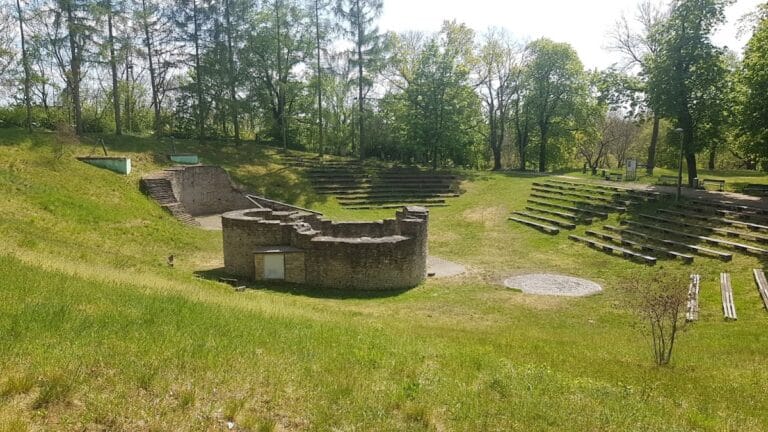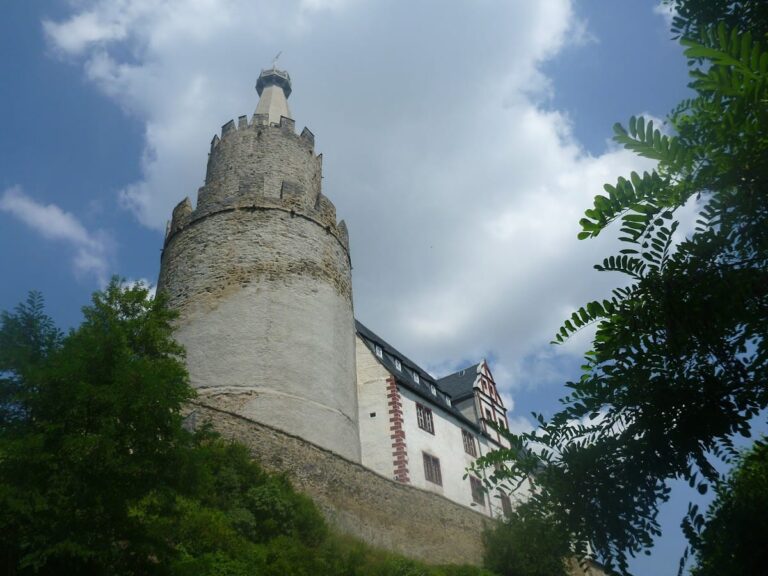Schloss Moritzburg Zeitz: A Historic Baroque Palace and Former Episcopal Castle
Visitor Information
Google Rating: 4.5
Popularity: Low
Google Maps: View on Google Maps
Official Website: museum-moritzburg-zeitz.de
Country: Germany
Civilization: Unclassified
Remains: Military
History
Schloss Moritzburg in Zeitz, Germany, has its origins as a royal and ecclesiastical stronghold dating back to the 10th century, established by the Saxon civilization. The first historical mention of the castle appears in 976, when Emperor Otto II granted the existing royal fortress to Hugo I, the first bishop of Zeitz, aiming to bolster imperial influence amid regional conflicts.
The castle endured repeated attacks during Slavic uprisings at the end of the 10th and beginning of the 11th centuries, specifically in 983, 1002, and 1028. These invasions led to the transfer of the bishop’s seat to Naumburg in 1028, though the castle continued to serve the collegiate chapter and functioned as a secondary residence for bishops.
In the 13th century, the fortress became a contested site between the Margraves of Meissen and the ecclesiastical authorities. Under Bishop Dietrich II, the outer courtyard and defensive walls were torn down in 1259, reflecting the violent disputes of the era. These fortifications, however, were rebuilt by 1271 and officially recognized in 1278, ensuring the castle’s continued strategic importance.
The Hussite Wars caused severe damage in 1429, prompting Bishop Johann II von Schleinitz to erect substantial Gothic defensive walls encircling the castle, complete with eight towers and a broad moat. Further fortification work took place from 1470 to 1492, strengthening the castle’s protective features.
During the religious upheaval of the Reformation, Saxon electors aimed to control the Naumburg bishopric. Despite their ambitions, Emperor Charles V appointed Julius von Pflug as bishop in 1547. After Pflug’s death in 1564, secular administration by the Wettin family took over the castle, which transformed into a secondary residence for this ruling dynasty.
The Thirty Years’ War brought devastating conflict to Zeitz, with the castle suffering heavy damage in 1644 during clashes between Swedish and imperial troops. In the following decades, between 1657 and 1667, the fortress was reconstructed in an early Baroque style to serve as the ducal seat of the Saxony-Zeitz branch of the Wettin family. This ambitious rebuilding replaced the medieval episcopal castle with a three-winged palace featuring a central tower. The adjacent cathedral was adapted into a ducal chapel, and the fortifications were modernized with bastions and earthworks to meet contemporary military standards.
After the Saxony-Zeitz line ended in 1718, control reverted to the main Saxon electoral authority. The castle then passed into Prussian hands in 1815 following the Congress of Vienna. Between 1820 and 1920, Schloss Moritzburg was repurposed as a poorhouse and prison. Later, municipal authorities acquired it in the late 1920s, using the premises for social services, including employment agencies and community kitchens.
During the Second World War, the castle was used as a labor camp housing displaced Polish and French workers. After the war, it temporarily served as a refugee camp until 1947, when a local history museum reopened within its walls. A major restoration project took place from 1990 to 2004, culminating in the castle grounds hosting the Saxony-Anhalt state garden show in 2004.
Today, Schloss Moritzburg functions as a museum that presents exhibitions on the history of Zeitz under Naumburg bishops and Saxon dukes. The collections include historical furniture spanning from the 16th to the 19th century and a unique German stroller museum. Since 2004, the gate tower has housed the Lutheriden library, adding to the site’s cultural and educational resources.
Remains
Schloss Moritzburg today stands as a fortified Baroque palace constructed upon the foundations of the medieval episcopal castle. Its layout features three main wings arranged around a central courtyard, with a prominent tower rising above the main wing. This structure was erected between 1657 and 1667 during the Baroque reconstruction under the Saxony-Zeitz dukes to replace the earlier medieval buildings.
Within the castle grounds lies the Zeitz Cathedral, known as the Dom St. Peter und Paul, originally the episcopal church. With the Baroque transformation of the castle, the cathedral was converted into the ducal chapel, adapting its interior and function to the needs of the new ducal residence.
The defensive features of the complex retain significant elements from the medieval period. Following severe damage during the Hussite Wars in 1429, a Gothic ring wall was constructed, forming an irregular circuit that includes eight towers and a wide surrounding moat. These fortifications were preserved and improved in the 15th century, and further reinforced in the 17th century as part of the Baroque upgrade with additional bastions and earthworks designed to enhance the castle’s defenses against artillery.
Among the most prominent surviving fortifications are the casemated earthworks facing the town, which provided protected artillery positions, and an impressive gatehouse that served as the formal entrance to the complex. These features remain important visual markers of the castle’s military history and architectural evolution.
The castle’s grounds were extensively expanded and landscaped to create a park area that merges the former moat with the adjacent Rossner Park. This extended space includes several amenities developed for the 2004 Saxony-Anhalt state garden show: an orangery, a new pond called Johannisteich, a dedicated event stage, playgrounds, bridges, and a reconstructed bathhouse near the northern entrance. Additionally, a multipurpose hall and a Japanese garden contribute to the site’s varied landscape.
Within the palace’s museum, approximately 250,000 artifacts are preserved, including permanent displays of furniture reflecting styles from the Renaissance through the 19th century, along with the specialized German stroller museum. The castle’s gatehouse is home to the Johannes Lebek art and museum education center and several historic libraries. Notably, it holds the Stiftsbibliothek Zeitz, a collection of over 40,000 volumes, as well as the library of the Lutheriden association, further enriching the site’s cultural significance.










